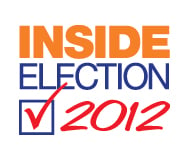You have /5 articles left.
Sign up for a free account or log in.
With the selection of Representative Paul Ryan as his running mate Saturday morning, presumed Republican nominee Mitt Romney made federal spending -- including on higher education -- a major flash point of the coming presidential campaign.
Ryan, a Wisconsin Republican and chair of the House Budget Committee, is best-known as the architect of a House of Representatives budget plan to slash discretionary spending, including federal research funding, student loans and the Pell Grant program, over the next decade. The latest version of that budget plan, which many Republicans praised and the Obama administration has panned, would try to contain cost of Pell Grants by changing eligibility criteria to exclude more students from the program and limiting the maximum award.
President Obama, who has campaigned in part on his proposals to make college more affordable, has already used Romney’s support for Ryan’s budget to attack the former Massachusetts governor. Romney’s selection of Ryan means that debate is likely to continue -- making the future of the Pell Grant, the bedrock financial aid program for poor students, a point of major contention between the two parties in the remaining three months of the campaign.
In contrast, Ryan has spoken (well before being considered for vice president) against more spending on student aid. In a video interview with Reason magazine, he said that Obama's spending on student aid imposed unreasonable costs on the public, and represented "new unfunded liabilities."
Romney had spoken in the past of his support for Ryan’s budget plan -- at one point calling it “marvelous.” But his choice of the Wisconsin Republican as a running mate indicates an endorsement of education cuts deeper than those Romney himself has proposed so far. In a recent appearance at the National Association of Student Financial Aid Administrators, one of Romney's education advisers said the candidate would eliminate or consolidate several grant programs and supported a return to bank-based student lending, which would actually cost the federal government money.
And at least so far, Romney has deviated occasionally from the Ryan plan, including agreeing with President Obama that interest rates on subsidized student loans should not increase to 6.8 percent this year, as the plan prescribed. (Ryan, too, eventually went along with a bipartisan proposal to stop the interest rate from doubling.)
But the presumptive nominee has not called for anything like Ryan’s wholesale restructuring of federal financial aid programs. In addition to tightening eligibility for the Pell Grant and setting a “sustainable” maximum for the program, Ryan’s proposal would undo the recent expansion of income-based repayment on student loans and eliminate subsidized loans for undergraduates -- transforming the federal financial aid programs into a Pell Grant aimed at a smaller number of needy students and offering unsubsidized loans (which have an interest rate of 6.8 percent) to everyone else.
Ryan’s budget proposal would also cut off federal funding for the National Endowment for the Humanities. And much of the nation’s funding for scientific research, including the National Institutes of Health, would come in for cuts as well as part of broader cuts in discretionary spending. Those cuts, as well as cuts to Medicaid and a transformation of Medicare into a voucher program, raised alarms at the Association of American Medical Colleges last spring.
Though Ryan’s budget could have far-reaching consequences for higher education, and his 14 years in Congress have included plenty of votes affecting the sector, he’s rarely spoken on his views on colleges and universities. From 1993-1995, before he entered Congress, Ryan worked as a speechwriter for William J. Bennett -- who as U.S. education secretary frequently and publicly criticized colleges and universities -- and now subscribes to Bennett’s argument that federal financial aid leads to higher tuition costs. (Note: An earlier version of this article incorrectly stated when Ryan worked for Bennett.)
Still, he has never overseen a state system of higher education (as Romney did in Massachusetts) or emphasized the role colleges play in society (as did Republican presidential hopefuls Newt Gingrich, who spoke frequently of the value of scientific research, and Rick Santorum, who accused Obama of being a "snob" for encouraging college attendance). Ryan's district, a slice of southern Wisconsin, includes relatively few of the state’s 85 colleges, and Ryan rarely pursued federal earmarks for those institutions even before the House put a moratorium on the practice, which he opposed. And Ryan, who graduated from Miami University in Ohio, has spent less time in academe than anyone else in the presidential race: Obama and Vice President Joe Biden both have law degrees; Romney has both a law degree and an M.B.A. An article in The Cincinnati Enquirer quoted friends and former professors of Ryan's as saying that he was a serious undergraduate with a strong interest in economics.
Ryan does hold strong views on at least one legislative issue (other than the budget) with consequences for higher education: stem-cell research. He’s voted several times to block federal funding for research involving embryonic stem cells.
In 2010, Ryan and other members of the Wisconsin Congressional delegation sent a letter to Education Secretary Arne Duncan, raising pointed questions about the “gainful employment” regulation, which ties for-profit colleges' eligibility for financial aid programs to their students’ ability to pay back loans. On Sunday, his first full day of campaigning for the office, Ryan joined Romney at rallies in North Carolina, including one at a for-profit college, the NASCAR Technical Institute.




